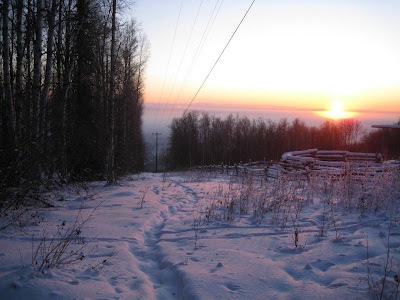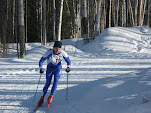Another January Double
Saturday was hectic, I also coach junior racers, including my son. Brought the wrong poles for him, and had to send Tamara back home to pick up the right ones while I helped with waxing skis. I tried to make up for it by baking pizza and a cake after we got home. That won a few points, but I'm still mud.
To the race. 10Ks are grinders anymore. At 50 you hammer all out from beginning to end and, with a max heart rate of 175 or so, still go a lot slower than you’d like. We had 15 second interval starts, and right behind me was the entire UAF varsity ski team. They all flew by within 4K. I was wobbling through the second half, got some low blood sugar thing going at about 7K, followed by that tunnel vision at 8K, but managed to hold on for 32:59 and 13th OA. The winner, Oyvind Watterdahl of Norway blitzed a 26:37, and their top six were all within a minute of him. My 50+ buddy Dave smoked in for top 10 and was 29:57. I basically got dusted. It was 100% effort, but a middling outcome. I'd have liked to have been a minute or so faster but that's racing.
Sunday I was quite tired, but arrived about an hour before the start. The scene was low-key (not that Saturday had a high stakes atmosphere). The roads and trails were 100% snow and ice packed. Max, who also beat me by 1.5 min on Saturday was there, he's more of a skier but I wanted a comfortable lead into the skate.
The 5K run started and finished at Birch Hill, wound around some nearby roads for a mile before dropping rapidly down a snow machine trail. Then you get ¾ mile of flat but the last mile is all uphill. Max stayed right with me until the trail flattened out, about 7 minutes in. I just focused on staying ahead and keeping it steady and pulled away on the flat. The last mile of the run portion included 250’ of climb. I got to the exchange in 19:27, took 1:35 (21:03) for transition, and then skied (skate technique) the approximately 5.9K ski portion in just under 18 (39:02). That felt good, if not a little frantic, and I knew that I had a several minute lead. The transition was 1:06 (40:08).
My goal was to run the last leg faster than the first, and even though I took some drink and a Gu to avoid any energy bonking, a negative split wasn’t going to happen. My legs were tight the whole way, and I ran 20:23 on the last leg, to finish in ~1:00:32. A new course record, old record 1:03:56 by Max in 2006.
I’ve been waiting for all these great endorsement offers from Nike and Fischer, but no calls yet. Actually, I’d prefer New Balance and Atomic. Someday maybe they’ll publish the results, but then again, it’s pretty embarrassing when a 50 yr old wins a race outright. Better hide those results!
Next up, I guess, is 8K snowshoe on the 7th and 10K freestyle on the 8th. Too short, too short, too short.
(Maybe my next blog output should be a winter wish list for racing. Don't know about everyone else, but our local ski race schedule isn't all that great if you're over 20 years old)





